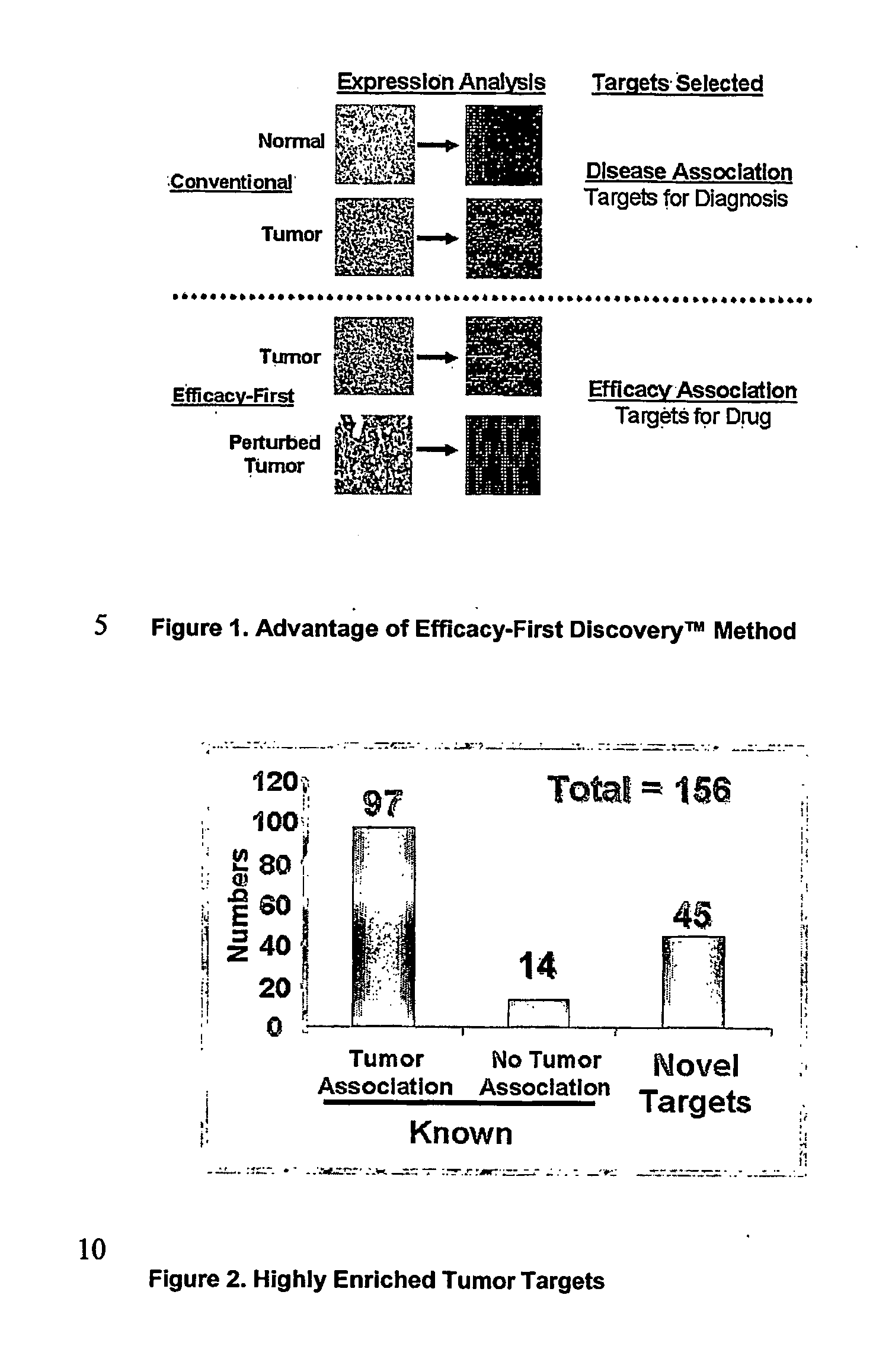Targets for tumor growth inhibition
a tumor growth inhibitor and target technology, applied in the field of diseases, can solve the problems of malignant cancer, dangerous, and many cases fatal, and achieve the effect of reducing the target ict 1024
- Summary
- Abstract
- Description
- Claims
- Application Information
AI Technical Summary
Benefits of technology
Problems solved by technology
Method used
Image
Examples
example 1
Gene Delivery Method for Target Validation
[0248] Efficacy-First Discovery™ method is initiated with a known gene that acts as a key player in a defined disease pathway (for example, angiogenesis) and a well-defined disease model (for example, human tumor xenografted in nude mice). An effective gene delivery tool is crucial, that is, one with strong expression but, equally or more importantly, with little background activity from the delivery tool itself. A non-viral and polymer based delivery system can provide both strong delivery and low background for solid tumors. The pathological, pharmaceutical and histological readouts following the treatment are analyzed in comparison with gene expression and protein profiles. Based on both bioinformatics analysis and biological analysis, the genes and proteins significantly up or down regulated in the defined pathway can be carefully selected and further analyzed by the same iterative in vivo validation process. The process started with e...
example 2
Tumor Perturbation with Known Factors
[0250] The human breast cancer carcinoma cell induced xenograft tumors were perturbed with genes that are known to affect tumor growth, and forced to grow faster and slower. The xenograft tumor model was induced with MDA-MB-435 cell on Ncr nu / nu mice. This demonstration was performed using the proprietary polymer mediated IL-2 and bFGF deliveries, based on our previous data and that bFGF is a well-known drug target enhancing tumor growth, and IL-2, which is not only a target but an approved cancer inhibition drug. Four tumor samples treated with IL-2, 4 tumor samples treated with bFGF, and 2 samples treated with Luc as control were collected and processed. When tumor reached 50 mm3 in size, pCI-IL-2 and pCI-bFGF were directly delivered intratumorally with pCI-Luc as a control. Tumor tissues (10 in total) were harvested at different time points and RNA samples were isolated by RNAsol, quantified and gel verified for their integrities. Data show ...
example 3
Expression Analysis with Affymetrix Chip
[0251] The total RNA samples from tumor tissues were subjected to expression analysis using Affymetrix GeneChip U133 A. The pictures show the original array images. The treated samples were compared with the control samples and initial analytical data were further analyzed with bioinformatics effort. According to the tumor growth rate and efficacy data, combined with the bioinformatics data and literature search, we used at least two folds as a benchmark for significant regulated targets. The signals must be higher than 200.
PUM
| Property | Measurement | Unit |
|---|---|---|
| Fraction | aaaaa | aaaaa |
| Fraction | aaaaa | aaaaa |
| Length | aaaaa | aaaaa |
Abstract
Description
Claims
Application Information
 Login to View More
Login to View More - R&D
- Intellectual Property
- Life Sciences
- Materials
- Tech Scout
- Unparalleled Data Quality
- Higher Quality Content
- 60% Fewer Hallucinations
Browse by: Latest US Patents, China's latest patents, Technical Efficacy Thesaurus, Application Domain, Technology Topic, Popular Technical Reports.
© 2025 PatSnap. All rights reserved.Legal|Privacy policy|Modern Slavery Act Transparency Statement|Sitemap|About US| Contact US: help@patsnap.com



